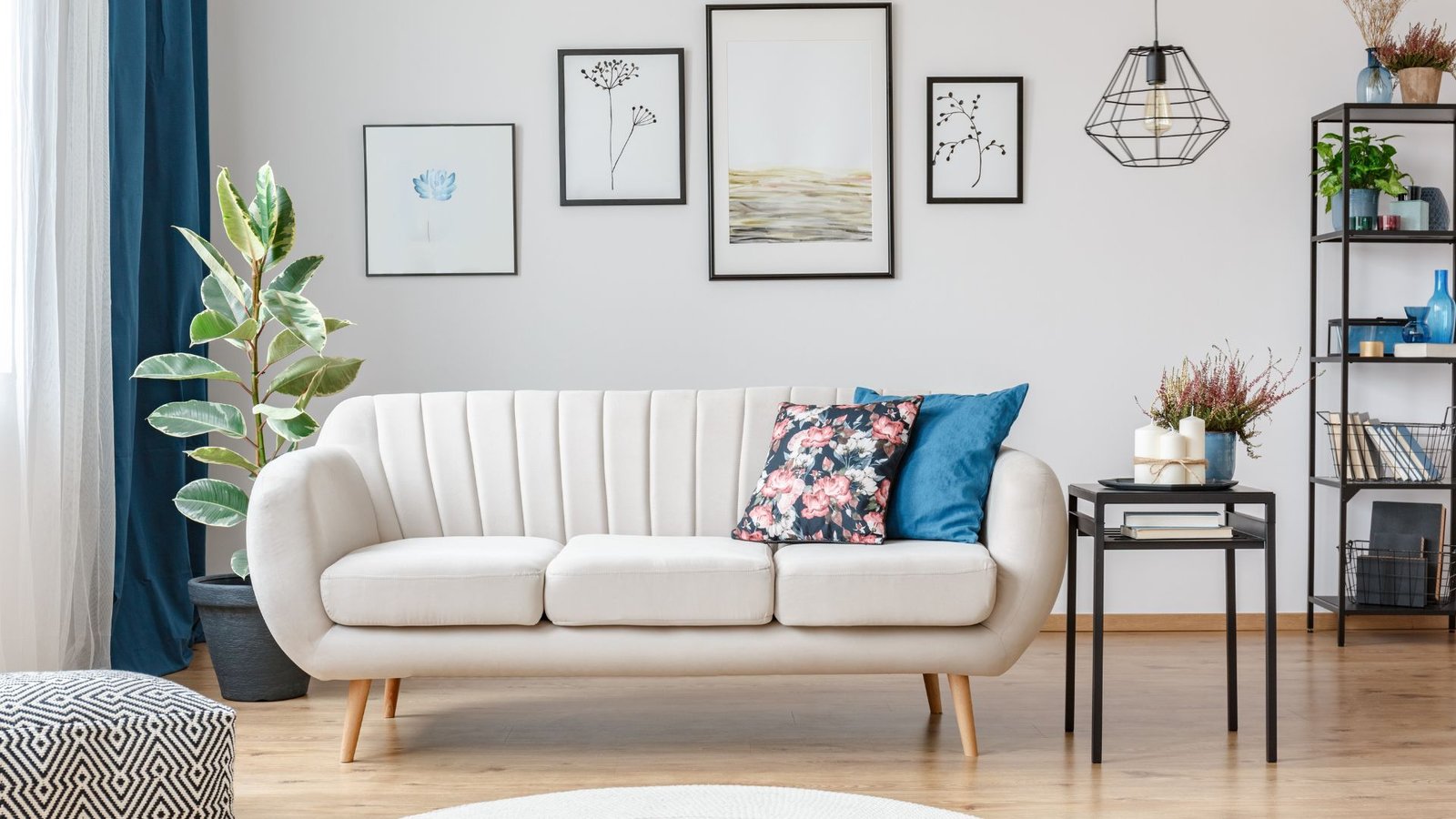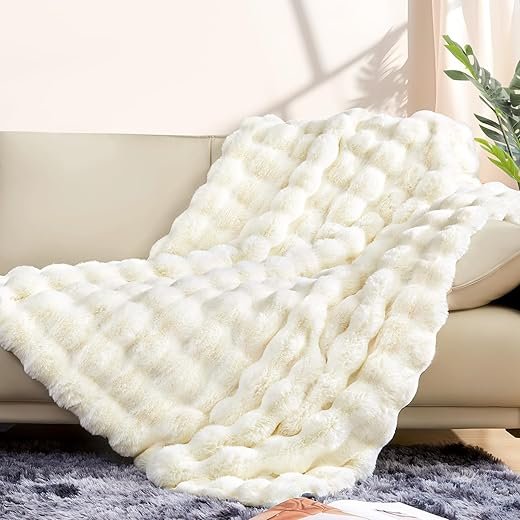How to make a small room look larger? Join us for an in-depth look at how to enhance your living space.
Feeling cramped in a small room is a common struggle many people face. Whether it’s a tiny bedroom, a compact living room, or a snug office, the challenge remains. How do you make a small space feel larger? How do you make it more inviting?
You might think this requires a major renovation or moving to a bigger place. But it doesn’t. With the right approach, you can make your small room feel much larger and more welcoming. Keep reading to discover how you can create this transformation in your own home.
So, what’s the secret to making a small room look bigger? It’s all about how you use the space you have. The colors you choose, the patterns you use, and how you arrange your furniture all matter. Together, they create the illusion of a larger room. Understand these design principles. Apply them. Your small space will feel much more expansive.
How to Make a Small Room Look Larger?
1. Expanding Your Space with the Right Palette
Color is one of the most powerful tools you can use to change the perception of space in a room. Light colors, in particular, are your best friends when it comes to making a room feel bigger.
Colors like white and soft pastels reflect light. They make a space feel open and airy. Cool tones—soft blues, greens, and grays—calm the mind and expand the room’s feel. These colors push back, making walls seem farther away.

Choose accent walls carefully to create separate zones in small spaces. A darker accent wall can add depth, making the room seem longer or wider. Balance it with lighter colors on the other walls to keep the space from feeling enclosed.

2. Adding Patterns: Interest Without Clutter
Patterns can be a great way to add visual interest to a room, but in a small space, you need to be strategic.
- Large, bold patterns can overwhelm a small room, making it feel cluttered and chaotic. Choose smaller, subtle geometric designs. They add interest without overwhelming the space.
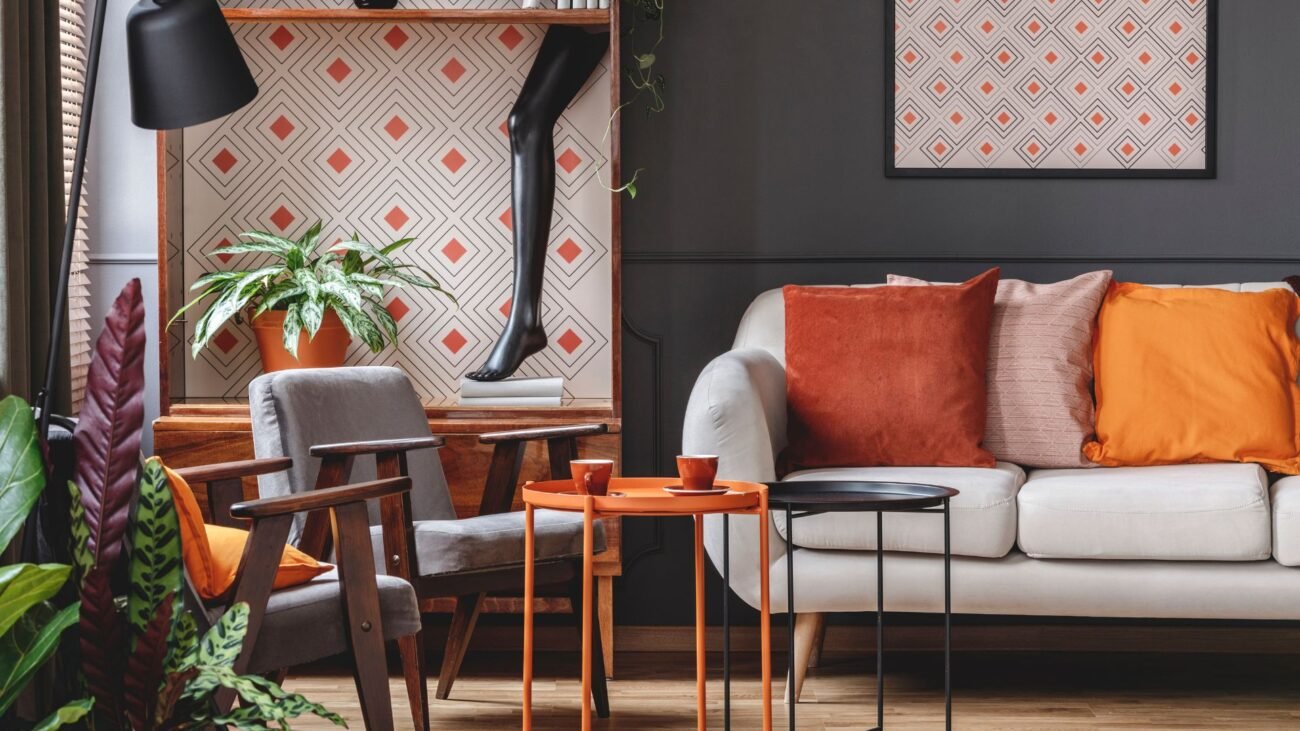
- Geometric patterns, like chevrons or herringbone create movement. They draw the eye and make the space feel larger.
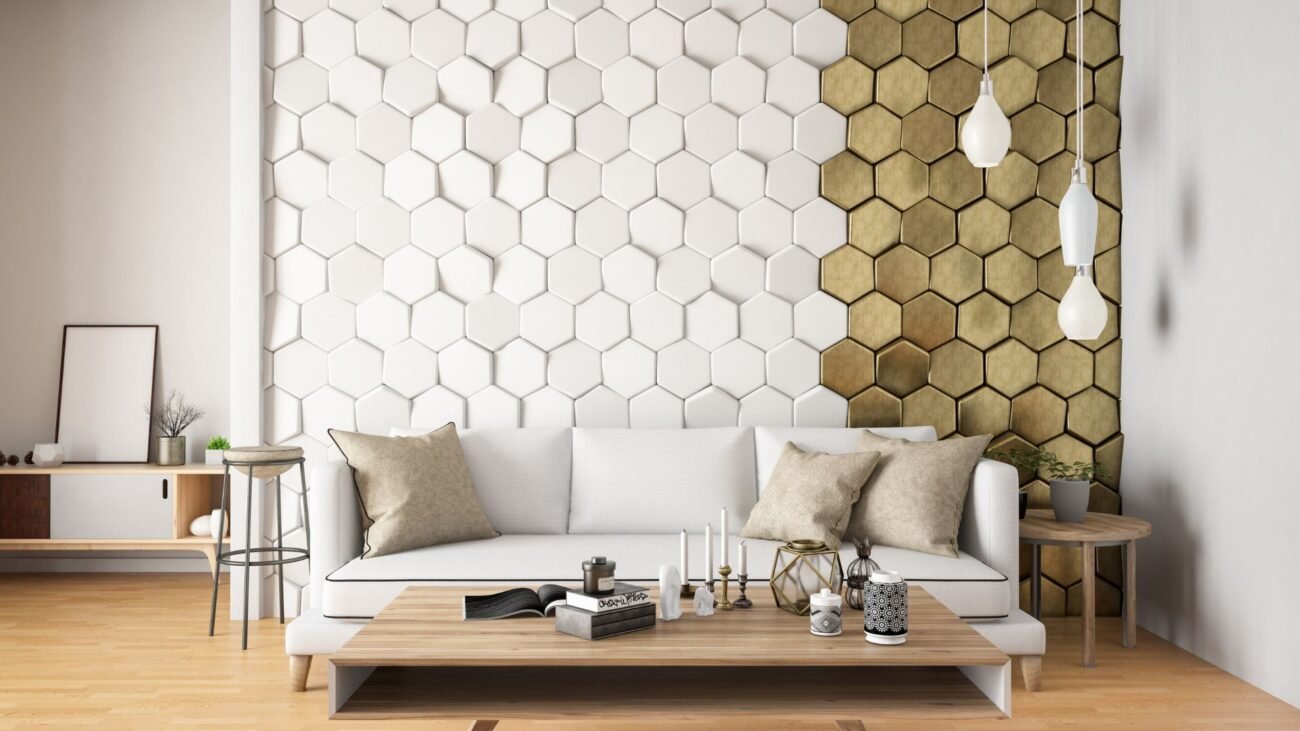
The key is to apply these patterns with restraint. A large floral print on an accent wall can create a focal point without overwhelming the entire room. Smaller, repetitive patterns can make a room feel busy. Use them with restraint to avoid clutter. Balance is key when incorporating patterns into a small space.
3. Illuminating Your Space
Lighting is crucial in any room. In small spaces, it’s essential for creating a sense of openness.
Natural light is best. If your room has windows, avoid heavy curtains or bulky furniture. Use sheer curtains to let light in while maintaining privacy. If possible, arrange your furniture so that it doesn’t block the natural light coming into the room.

In spaces with little natural light, layer your lighting. Avoid dark corners and shadows that can make the room feel smaller. Overhead fixtures or recessed lights, to provide general illumination, table lamps or under-cabinet lights, to brighten specific areas where you need focused light.
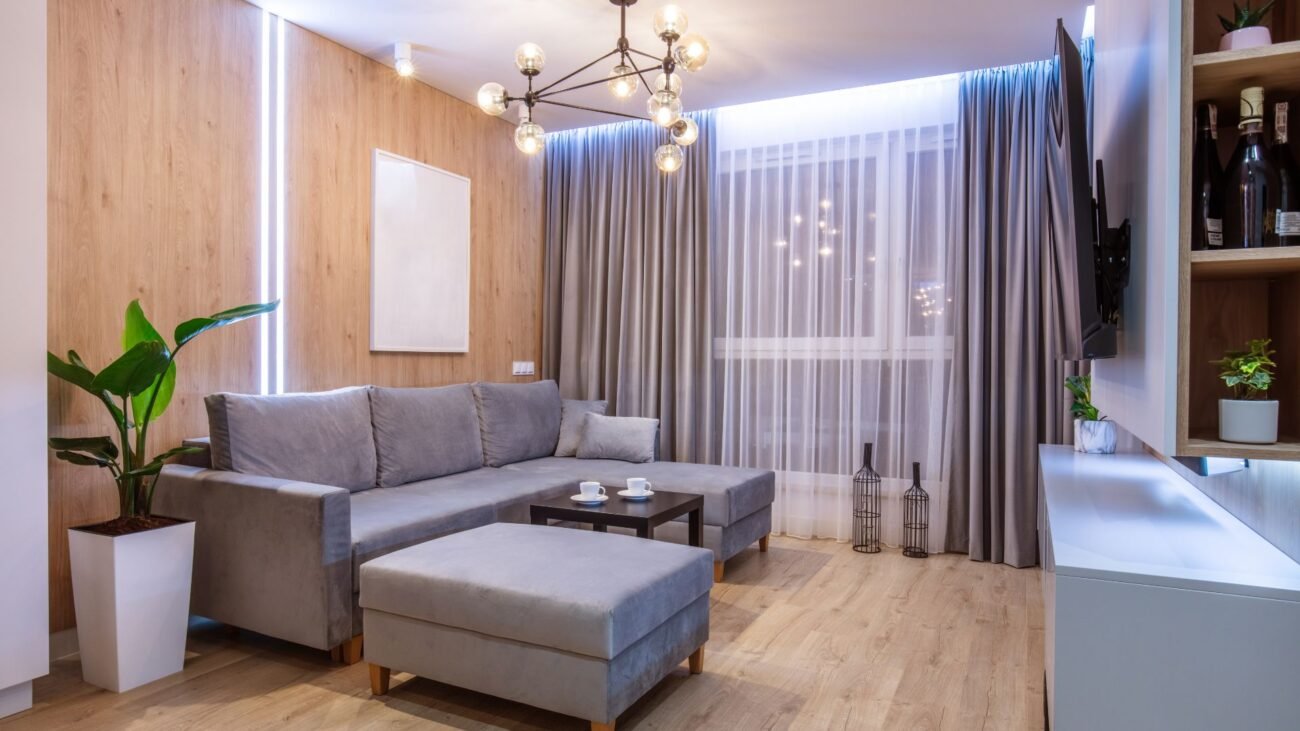
4. Mirrors: Creating the Illusion of Space
Mirrors are one of the most effective tools for creating the illusion of space in a small room. By reflecting light and views, they can double the perceived size of a room.
Place a large mirror or a group of smaller mirrors opposite a window. They reflect natural light and views from outside. This brings the outside in and adds visual interest.
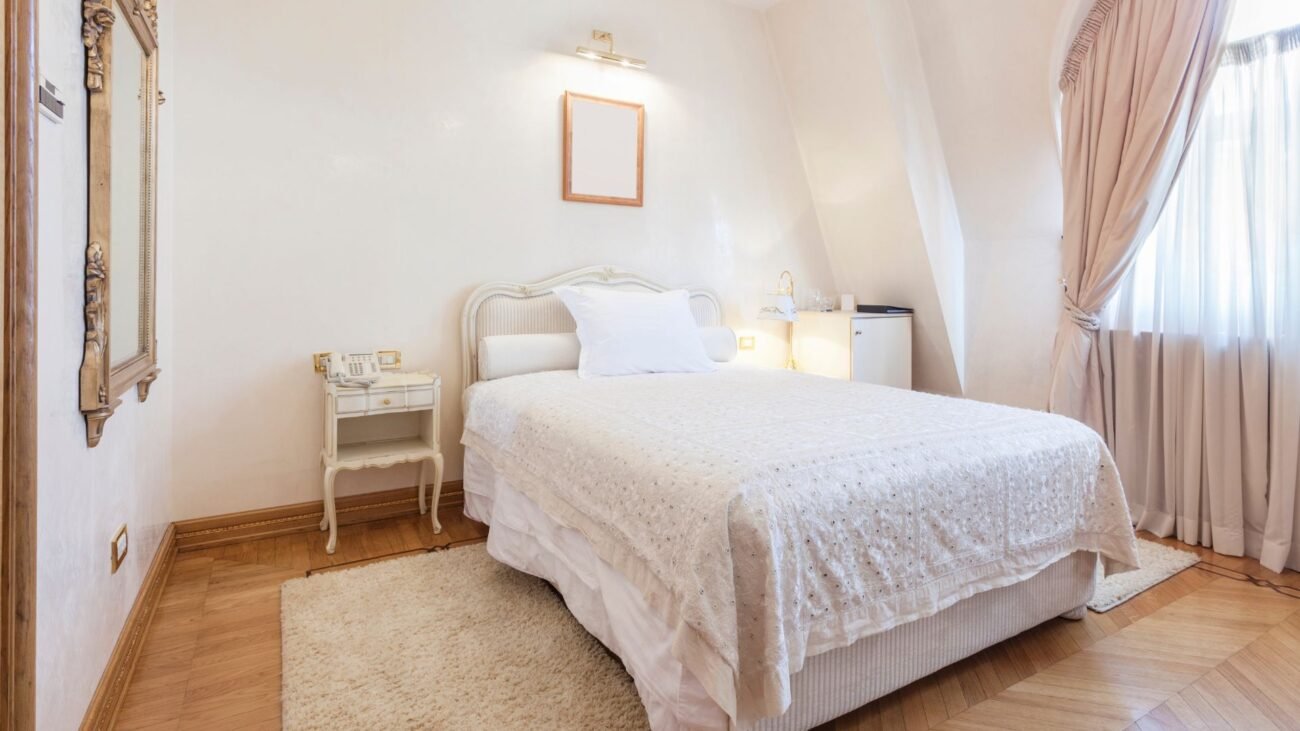
Mirrors can also be used strategically to highlight certain areas of the room. Placing a mirror behind a piece of furniture can create the illusion of depth, making the room feel larger.
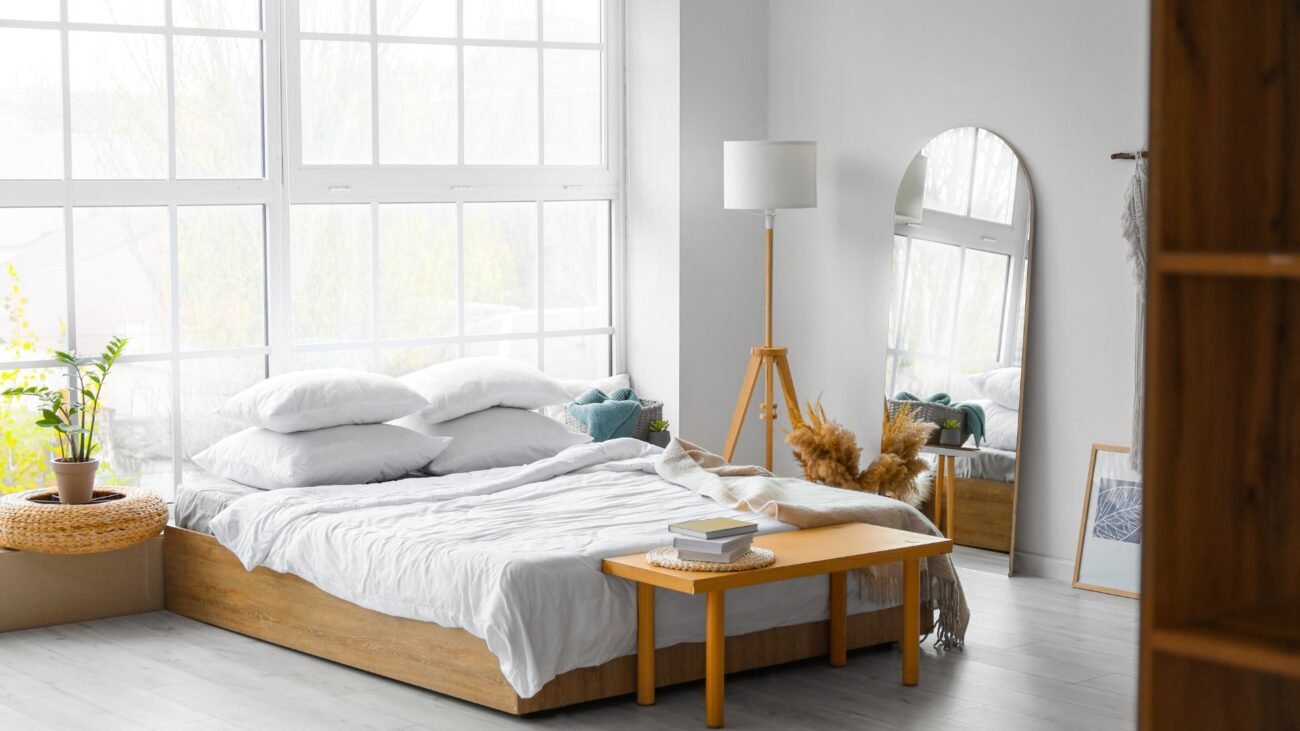
Mirrors with decorative frames can double as artwork. They add style and enhance the sense of space.

5. Choosing Furniture the Right Pieces
Massive furniture dominates the space, creating a cramped and cluttered atmosphere. Instead, opt for smaller, more streamlined pieces that fit the scale of the room.
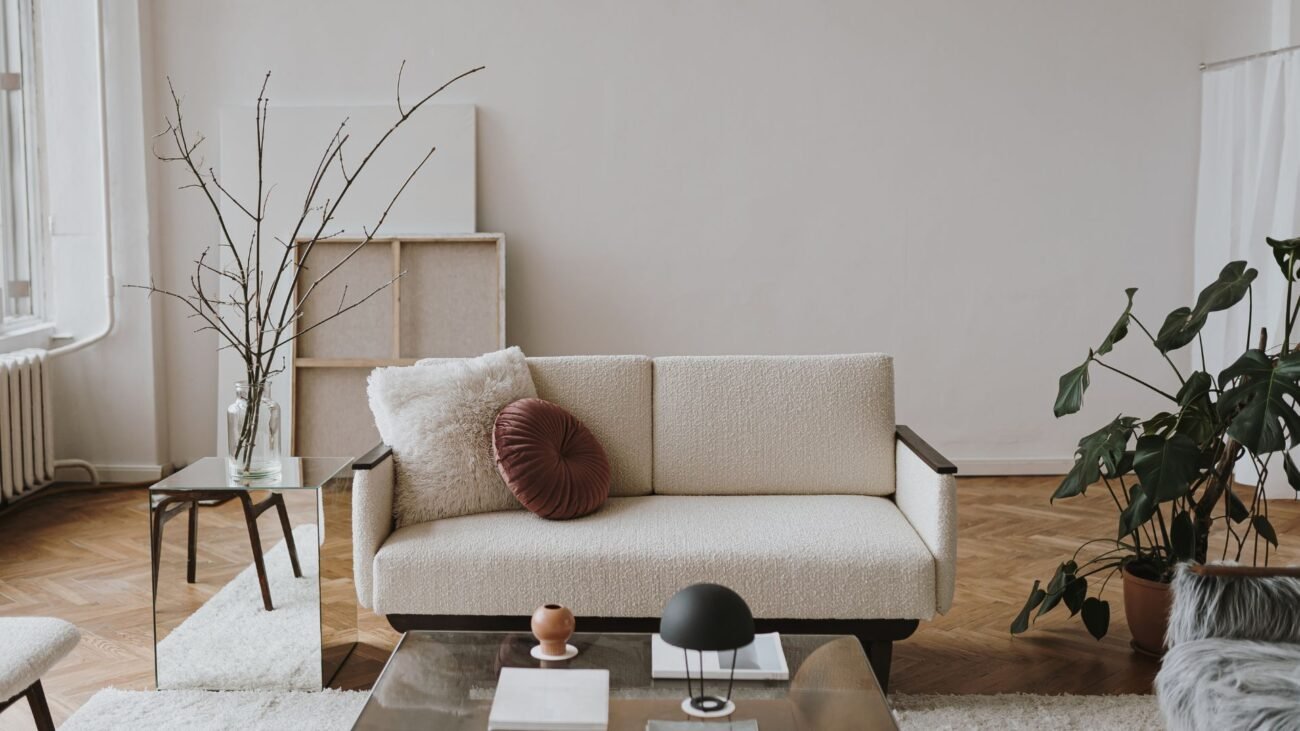
Multi-functional furniture is a must-have in small spaces. A sofa bed, an ottoman with hidden storage, or a coffee table that doubles as a desk allow you to maximize the use of your space without sacrificing comfort or style.

Another important thing is the layout of the room. In small spaces, it’s important to arrange furniture in a way that allows for easy movement and flow. Don’t place large pieces in front of windows or doorways. This blocks light and makes the room feel closed off. Float furniture away from the walls to create a dynamic layout and make the room feel larger.
6. Storage: Keeping Clutter at Bay
Too much furniture, decor, or even clutter on surfaces can make a room feel cramped and chaotic. Consider using hidden storage solutions, such as under-bed storage bins or furniture with built-in storage compartments, to keep the room tidy and organized.
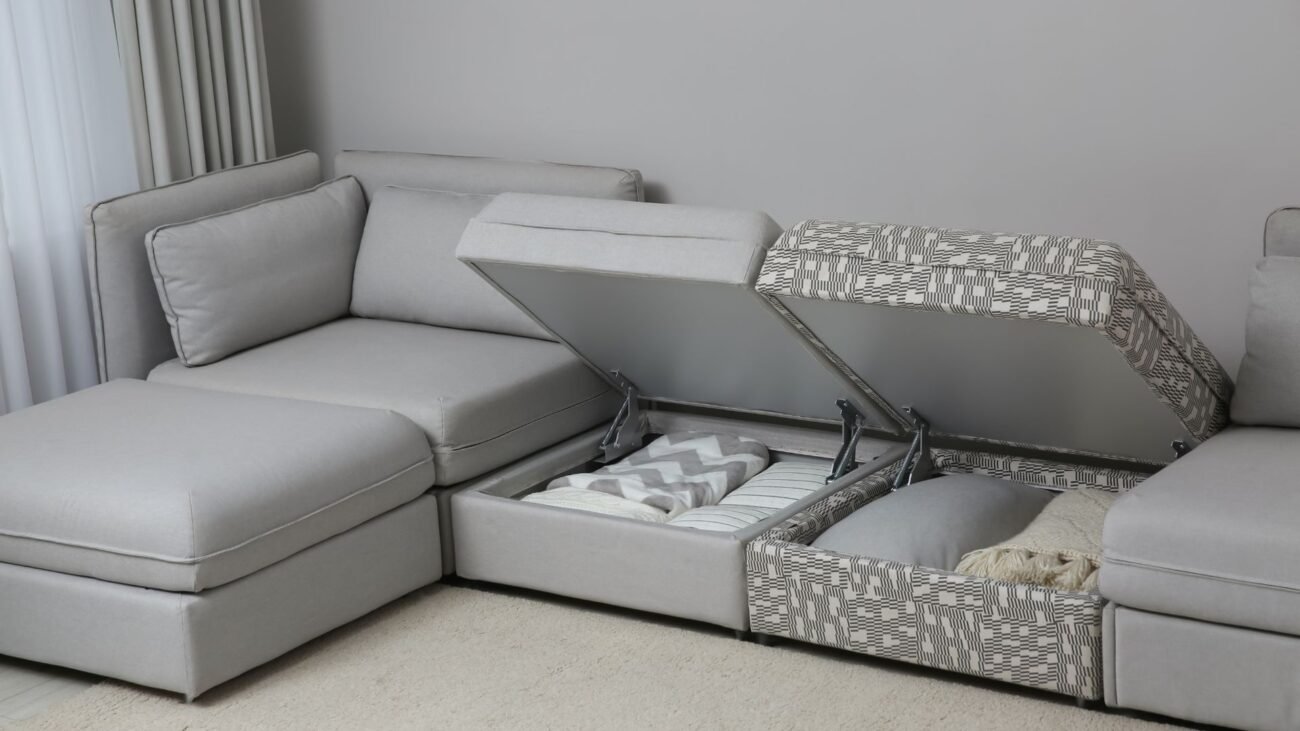
Maximizing vertical space is another effective strategy for keeping a small room organized. Tall bookshelves, wall-mounted shelves, and hanging organizers keep the floor clear. They offer ample storage. Use the space above doors or windows for extra shelves. Install a pegboard for items like kitchen utensils or office supplies.
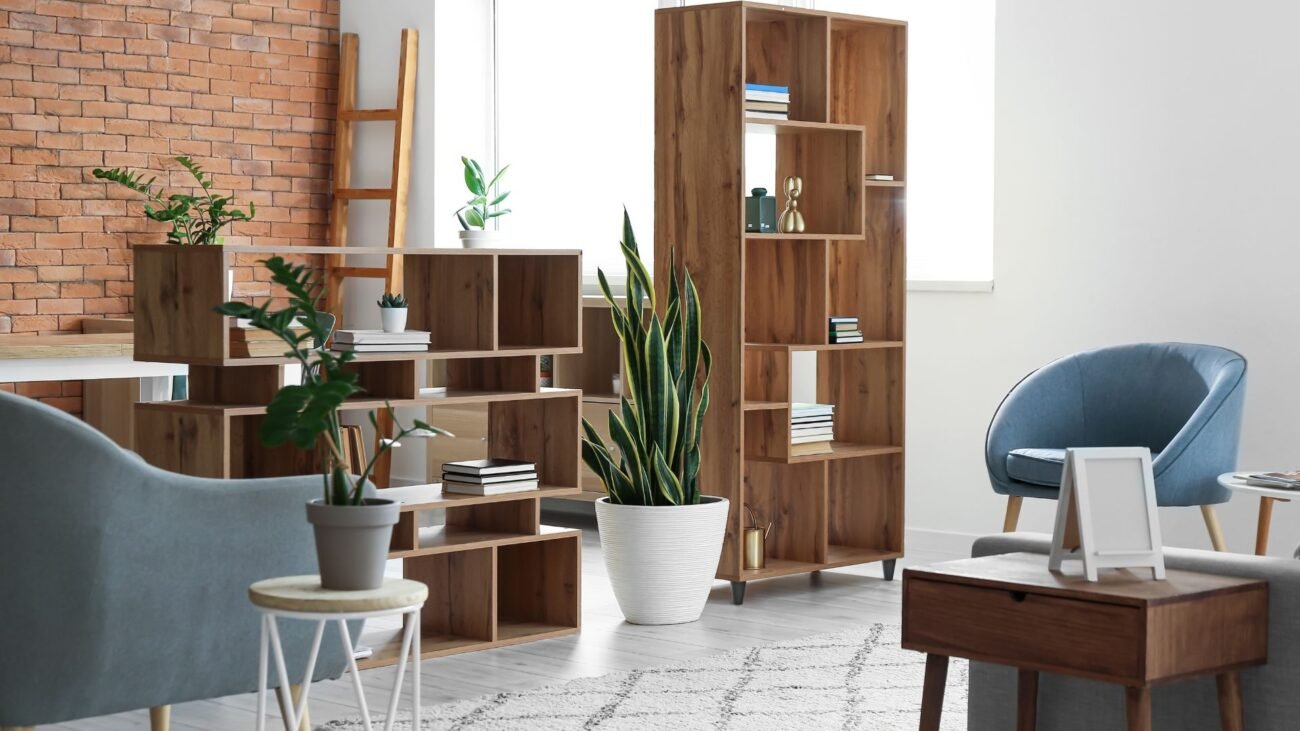
Closet organizers can also make a big difference in small rooms. Adding more shelves, hanging rods, or drawer units to make the most of your closet space.

7. Choosing Flooring the Right Material
Light-colored flooring, like light wood or pale tiles, makes a room feel open and airy. It reflects more light. Dark flooring can make a room feel smaller and more enclosed. This effect is stronger if the walls are also dark..
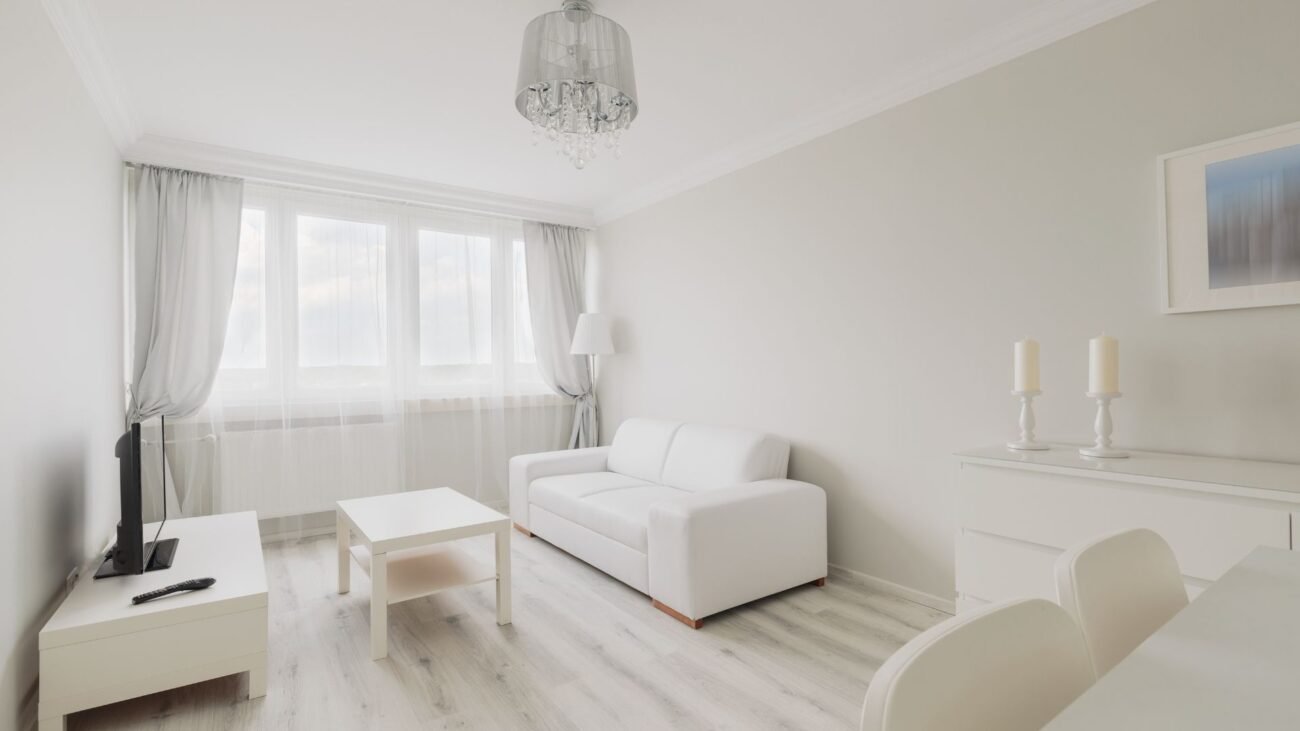
Continuous flooring creates a sense of flow. It makes the space feel larger. This works well in open-plan layouts. Seamless transitions make the whole area feel more expansive.

Large tiles or wide planks can also help make a room feel bigger. Using larger tiles or wider planks reduces visual interruptions. This makes the room feel more spacious.
Diagonal or herringbone patterns can make a room feel larger. They draw the eye in different directions, especially in light or neutral tones.
Position rugs to create distinct zones in compact spaces. Choose a rug that fits the room’s proportions. Too small, and it feels disjointed; too large, and it overwhelms. Opt for simple patterns or solid colors. Avoid busy designs that clutter the space. A well-chosen rug adds warmth and texture, helping the room feel larger.
8. The Final Touches: Making Your Room More Attractive
First, set up color, patterns, lighting, mirrors, furniture, and flooring. Then add the final touches. They will make your small room look larger, more attractive, and more comfortable.
8.1. Texture: Adding Depth and Interest
In a small room, texture plays a key role in adding depth and interest without cluttering the space. A plush throw on a sleek sofa. A soft rug on a hardwood floor. Textured pillows on smooth linens. Each adds to a cozy, inviting atmosphere.
Mix wood, metal, glass, and fabric in your decor. This adds dimension and prevents the room from feeling flat.
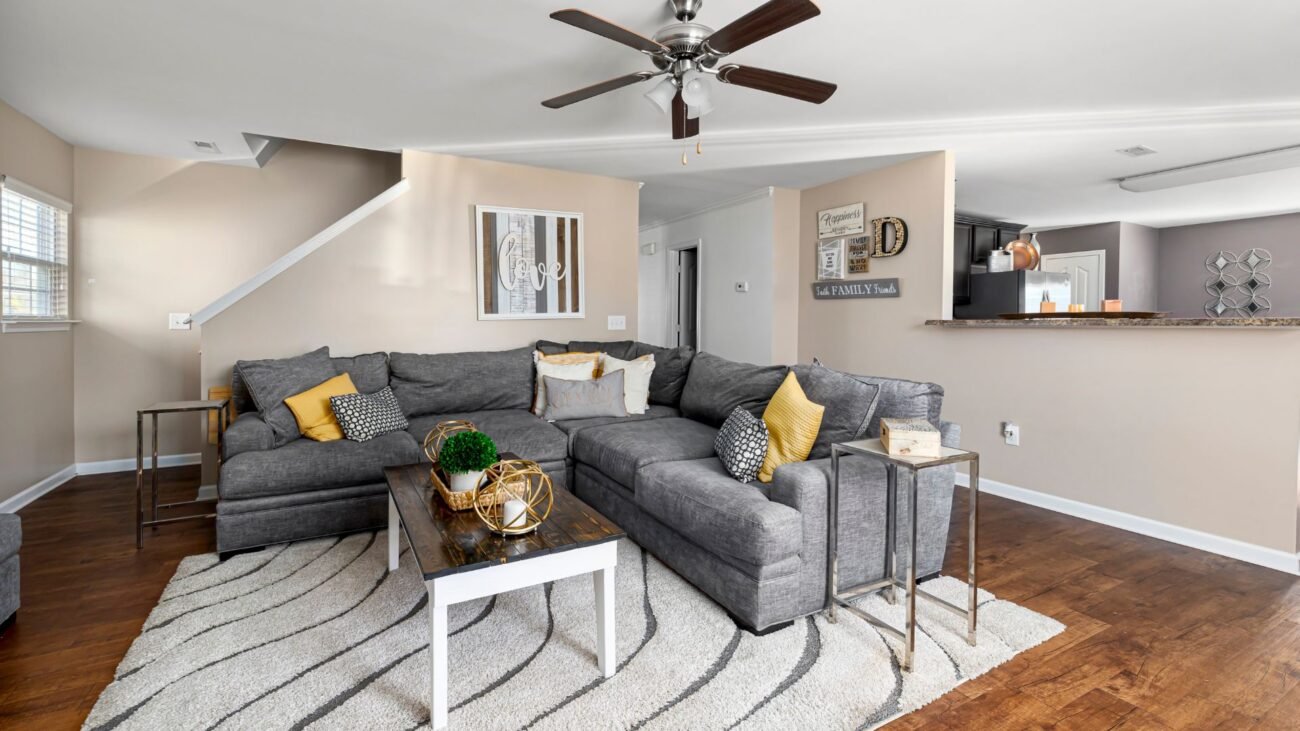
8.2. Artwork and Decor: Less is More
Select artwork or decor pieces that resonate with you and harmonize design. Large-scale artwork can be a focal point. It draws the eye and can make a space seem larger. Balance it with minimal decor to avoid clutter.
Use reflective or transparent materials like glass vases, acrylic furniture, or metallic accents. They add visual interest and help keep the room feeling open.
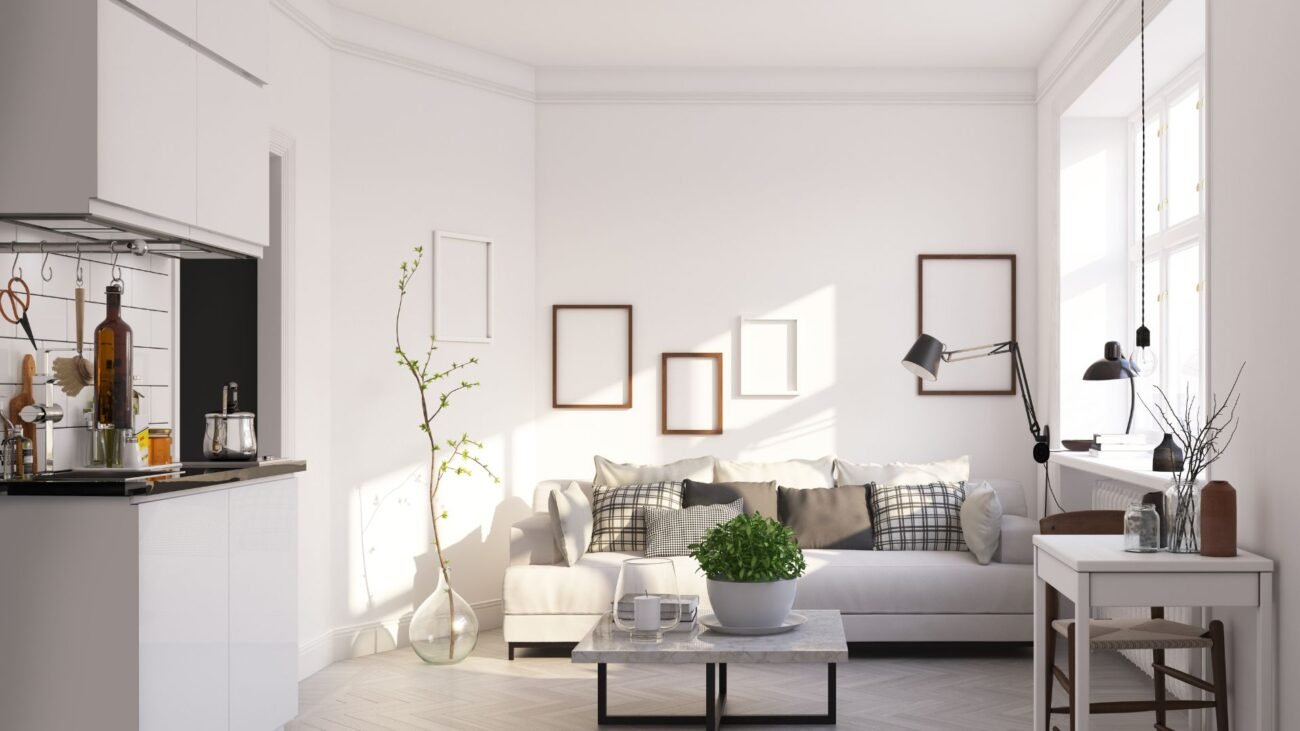
8.3. Cohesion: Creating a Unified Look
Keep your room’s design cohesive. It makes the space feel larger and more attractive. Use a consistent color palette, matching furniture styles, and coordinated decor. When these elements work together, the room feels organized and spacious.
8.4. Personalization: Making It Yours
Finally, don’t forget to add personal touches to make the room feel like home. Favorite artwork, a book collection, or a unique decor piece adds warmth and character.
Too many personal items can crowd the room. Choose your preferred items and showcase them with intention.
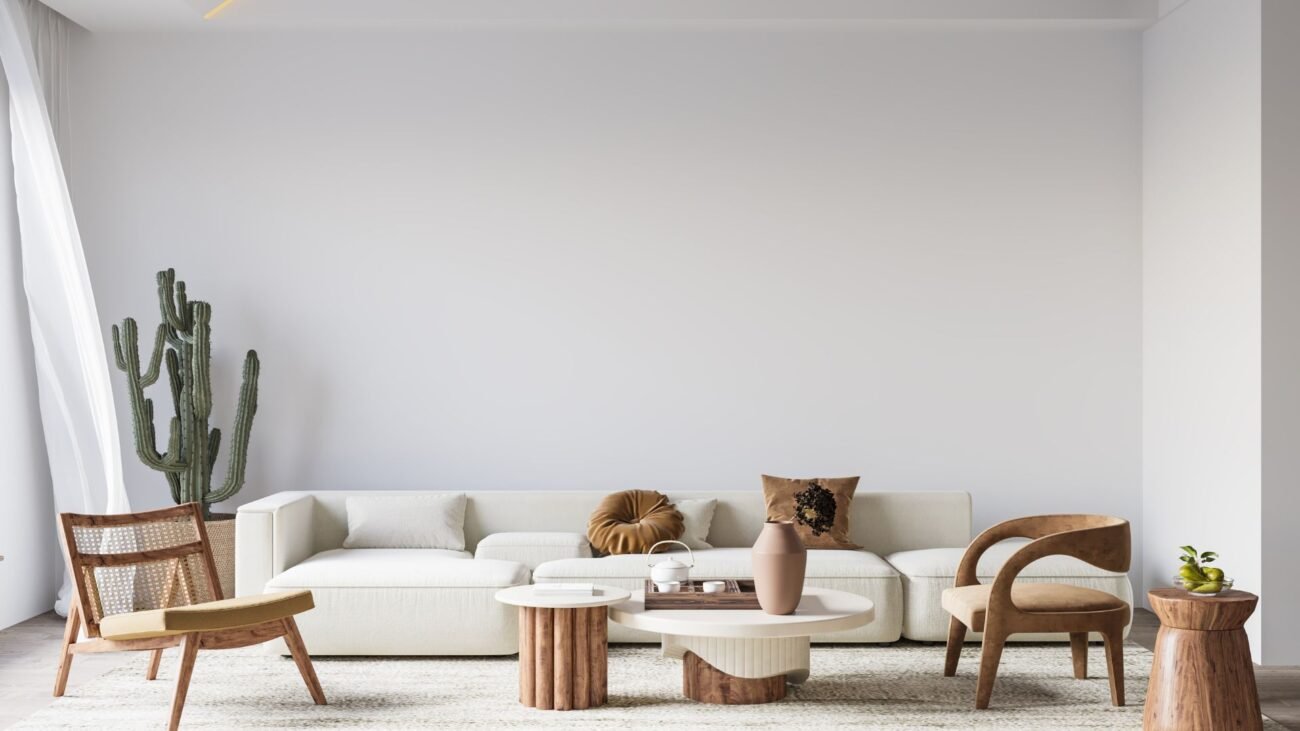
Begin by choosing a light, neutral color palette for your walls and furniture. Add a mirror to reflect light and create depth. Try vertical stripes or oversized tiles to create a sense of breadth. And remember, less is more—keep your room organized and free of clutter to maintain that open, airy feel.
Start today. See how these simple changes can transform your small room into a spacious sanctuary. Your dream of a larger, more comfortable space is a few design tweaks away!
>. Learn more: The Best Furniture for Small Living Room: Maximizing Your Living Area


